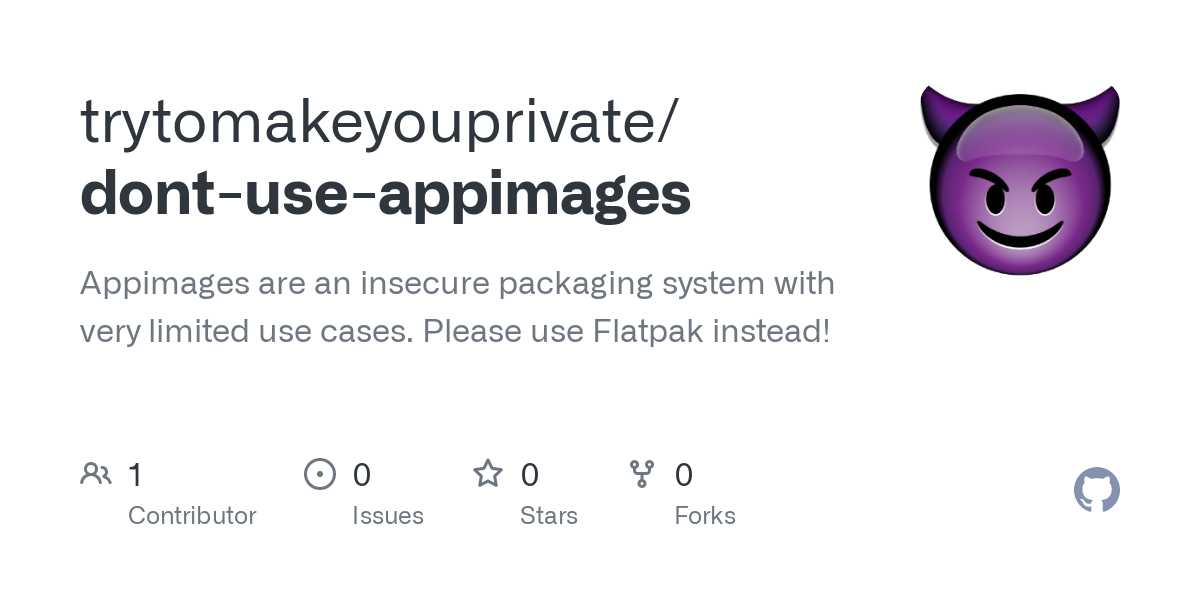Appimages totally suck, because many developers think they were a real packaging format and support them exclusively.
Their use case is tiny, and in 99% of cases Flatpak is just better.
I could not find a single post or article about all the problems they have, so I wrote this.
This is not about shaming open source contributors. But Appimages are obviously broken, pretty badly maintained, while organizations/companies like Balena, Nextcloud etc. don’t seem to get that.
Yes SELinux confined users or apparmor could allow sandboxing apps the same way as flatpaks.
On 2GB of RAM systems that would make a lot of sense.
Chromium cant use its native sandbox, Firefox supposedly can.
But Librewolf and more should be used as Flatpak, unless you need multiple apps to chat between (native messaging) which doesnt work yet, its way more stable.
Yeah, I think we should extend on the sandboxing features like AppArmor, SELinux and Flatpak for desktop use. Look at MacOS and Android and what they’re doing for desktop users. That is currently not the Linux experience. Ultimately I’d like my system to have an easy and fine grained system to limit permissions. Force third-party apps to ask permission before accessing my documents or microphone. have sane defaults. make it easy to revoke for example internet access with a couple of clicks. make it so I can open an app multiple times. and have different profiles for work, private stuff and testing. This should be the default and active in 100% of the desktop applications. And apps should all use a dedicated individual place to store their data and config files.
Librewolf and more […] used as Flatpak, […] its way more stable.
That’s just not true. I’ve been using Linux for quite a while now. And I can’t remember my browser crashing in years, seriously. Firefox slowed down a bit when I had 3000 tabs open, but that’s it. How stable is your Flatpak browser? Does it crash minus 5 times each year? How would that even work? And what about the theming and addons like password managers I talked about in the other comment? Use the distro’s packaged version. It is way more stable. And as a bonus all the edge-cases will now work, too.
Most things already work. You know, desktops need to start with that, they need to implement popups for these permissions. And I guess apps also dont ask for permissions yet (like they do with Pipewire access), they just take it or fail.
So its again a problem of adapted apps.
Storage is all stored in
~/.var/app/and could be duplicated etc if you really want to. That would require some hacking, but you could have multiple profiles for apps. Tbh this is not hard to do at all, just rename the app folder to “appname-profile” and rename the active folder back to the apps name.A GUI for that would be interesting.
Browsers are a big example of good native packaging, as they get most attention. But for example on Debian, or Ubuntu, or many other platforms, I would prefer to use Flatpak Firefox (if firefox didnt have their deb repo now).
Chromium is hacky as Flatpak as the Sandbox is imcompatible and needed to be replaced.
For firefox there is no statement about this, hopefully soon. I use native browsers for the same reason as you.



